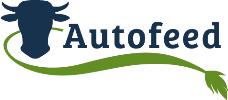Objectives of the project
Objectives of the project:
Carrying out an evaluation of the conditions of use of the Automatic Feeding Systems (AFS) and of partially automated systems for rationing and ration management operations in some dairy and beef cattle farms in Lombardy. The aim is:
- Make cheap and convenient the introduction of such systems in farms;
- Improve the animal condition to access the delivered feed;
- Improve the efficiency of the unifeed rationing system.
Description of activities
Preliminary fact-finding survey: analysis of the market, of the available AFS types, of the choosen installation solutions and of the opinion the breeders have on AFS.
Definition of the housing models equipped with AFS and their comparison with others based on a conventional unifeed wagon.
Monitoring and analysis of the animal farms already equipped with AFS to highlight the economic, production performance and animal welfare aspects achievable.
Feasibility study in companies not equipped with AFS to define the technical and economic design elements. Comparison of before and after AFS installation.
A first expected result of the project will be the identification of useful elementsto improve the efficiency of TMR preparation and distribution (e.g. by using optical systems for in line determination of the chopping length). The project activities will result in the collectyion of the data relating to the variability of the ration which will allow to highlight the causes.
Their identification will allow the issue of guidelines and technical sheets which:
- will identify the best organizational procedures to reduce the heterogeneity of the unifeed fodder ration;
- will provide updated information on the level of food efficiency achievable with unifeed rationing
The data acquired in farms already adopting fully automatic systems (AFS) will be used for the drafting of guidelines on the introduction of such systems in newly designed barns as well as their integration in already existing ones.
More specifically, this document will address the issues relating to:
- the energy efficiency of the system;
- production performance of animals (dairy and meat);
- use of labor;
- design and structural aspects of the barns (both in the case of design from scratch and the renovation of existing shelters).

